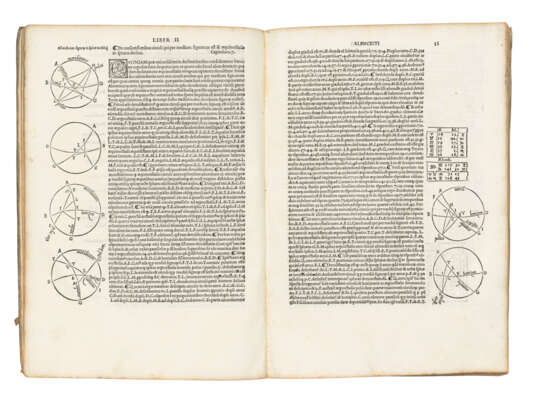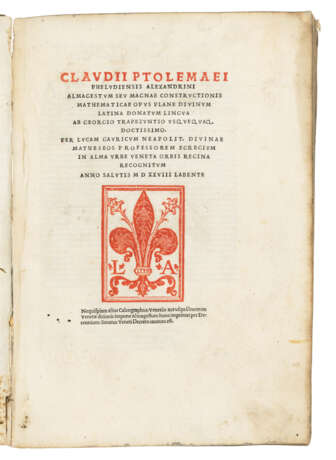ID 470154
Lot 97 | Ptolemy (c100-170)
Estimate value
£ 7 000 – 10 000
Almagest. 1528
PTOLEMAEUS, Claudius (c.100-c.170). Almagestum seu magnae constructionis mathematicae opus. Translated from Greek into Latin by Georgius Trapezuntius, edited by Luca Gaurico. Venice: Luc'antonio Giunta, 1528.
The first published Latin translation made from the original Greek text of Ptolemy's most important astronomical and mathematical work. 'Until the innovative work of Tycho Brahe and Kepler in the late sixteenth and early seventeenth centuries, that is, for nearly fifteen hundred years, the Almagest was the basis of all sophisticated astronomy, a longevity exceeded only by Euclid's Elements' (Swerdlow). Instruments mentioned or described include the equatorial armillary, the plinth, the meridional armillary, the triquestrum and the armillary astrolabon. The Almagest had been translated into Arabic and was known to the later Middle Ages in a Latin translation from the Arabic by Gerard of Cremona; that version was first published in Venice in 1515. Adams P-2214; Norman 1760; see Stillwell 97; Swerdlow, Rome Reborn (Washington 1993), p.144; Wellcome 5281.
Folio (313 x 215mm). Title printed in red and black, woodcut diagrams throughout, complete with final blank S8 (some very small wormholes extending through the text with associated loss of some letters, quires M-O with wormhole at gutter, some occasional light spotting). Contemporary painted purple vellum, upper cover with author's name in manuscript (worn and defective with loss at spine ends, faded and rubbed. ties lacking); modern cloth box. Provenance: old ink manuscript library classmarks on front pastedown.
| Address of auction |
CHRISTIE'S 8 King Street, St. James's SW1Y 6QT London United Kingdom | |
|---|---|---|
| Preview |
| |
| Phone | +44 (0)20 7839 9060 | |
| Buyer Premium | see on Website | |
| Conditions of purchase | Conditions of purchase |





